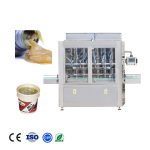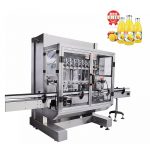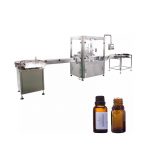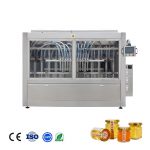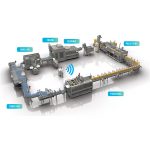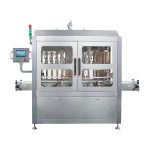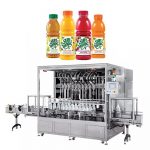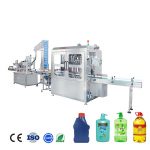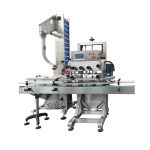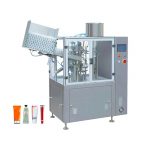What is sauce filling machine?
A sauce filling machine is a type of equipment that is used to fill containers with sauce or other liquid products. These machines are commonly used in the food and beverage industry to package and distribute products such as ketchup, mayonnaise, salad dressing, and other condiments. Sauce filling machines come in a variety of sizes and designs, and can be used for filling small containers, such as bottles and jars, or larger containers, such as drums and pails.
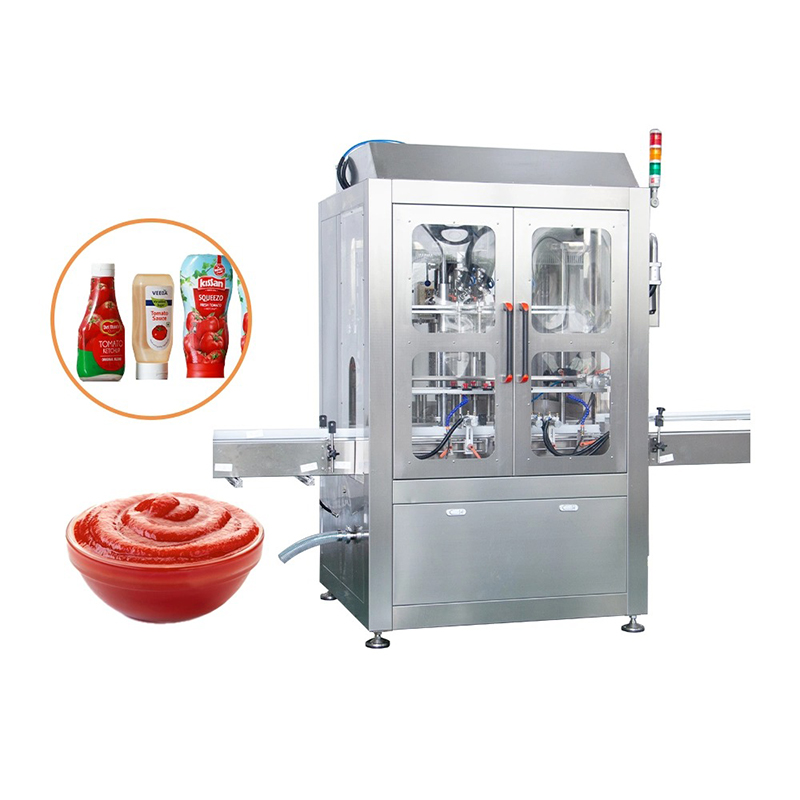
Sauce filling machines typically consist of a hopper for holding the sauce, a filling nozzle for dispensing the sauce, and a control system for regulating the flow of sauce and ensuring accurate filling. Some sauce filling machines may also have additional features, such as capping or labeling capabilities, to further automate the filling process. Sauce filling machines can be operated manually or automated, and can be used in a variety of settings, including factories, warehouses, and packaging facilities.
What is sauce?
Sauce is a liquid or semi-solid food that is used to add flavor and moisture to dishes, or to serve as a condiment. Sauces are often used to enhance the taste of savory dishes, such as meats, vegetables, and grains, and can be made from a wide variety of ingredients, including vegetables, fruits, herbs, spices, and other flavorings.
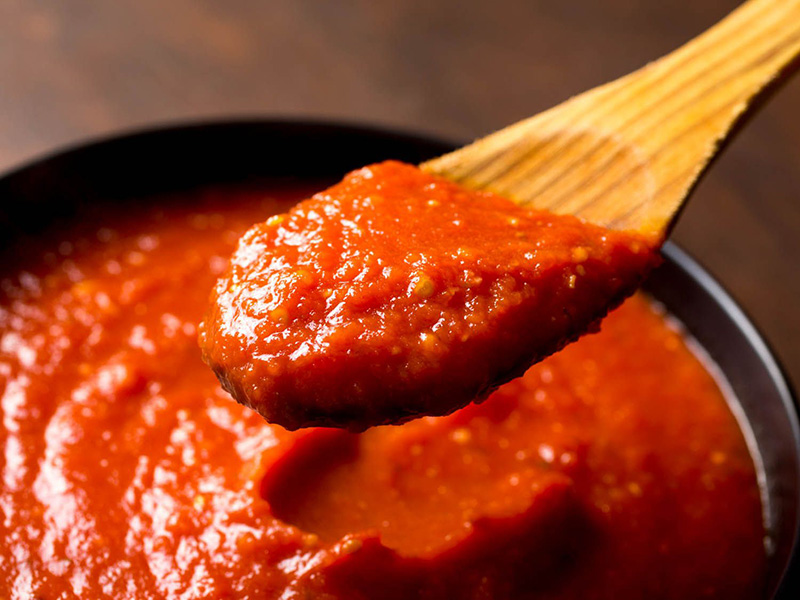
There are many types of sauces, and they can vary widely in terms of flavor, texture, and consistency. Some common types of sauce include tomato sauce, Alfredo sauce, BBQ sauce, and soy sauce. Sauces can be made from scratch or purchased ready-made, and can be served hot or cold. They are often used to add flavor and moisture to dishes, or as a condiment to be added to food after it has been cooked.
What are the common packaging sauce containers?
There are many different types of packaging containers that can be used for sauces, and the most suitable type will depend on the specific characteristics of the sauce, as well as the intended use and end-market. Some common packaging containers for sauces include:
Glass bottles: Glass bottles are a popular packaging option for sauces, as they are durable, visually appealing, and can be used for a wide range of products. Glass bottles are available in various sizes and shapes, and can be fitted with various types of closures, such as screw caps, snap caps, and pumps.
Plastic bottles: Plastic bottles are another common packaging option for sauces, as they are lightweight, cost-effective, and easy to handle. Plastic bottles are available in a wide range of sizes and shapes, and can be made from various types of plastic, including PET, HDPE, and PVC.
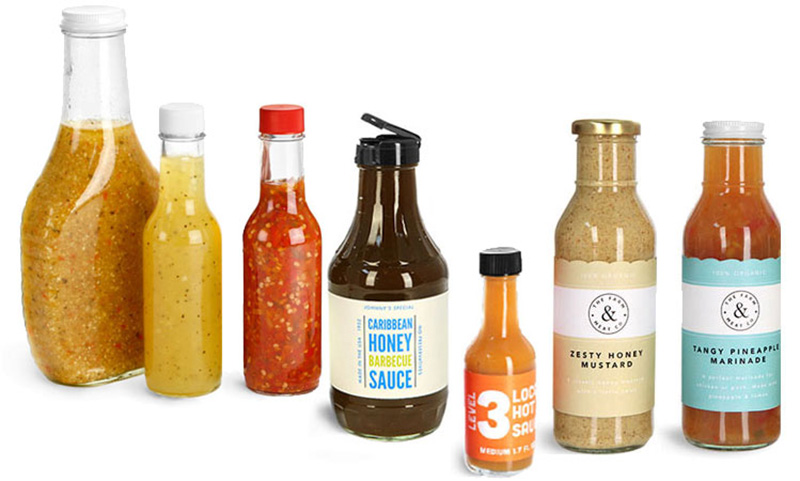
Glass jars: Glass jars are a popular packaging option for sauces, as they are durable, visually appealing, and can be used for a wide range of products. Glass jars are available in various sizes and shapes, and can be fitted with various types of closures, such as screw caps, snap caps, and pumps.
Plastic pouches: Plastic pouches are a convenient packaging option for sauces, as they are lightweight, easy to handle, and can be sealed to preserve freshness. Plastic pouches are available in a wide range of sizes and shapes, and can be made from various types of plastic, including LDPE, LLDPE, and HDPE.
Cans: Cans are a popular packaging option for sauces, as they are durable, easy to handle, and can be sealed to preserve freshness. Cans are available in a wide range of sizes, and can be made from various materials, including aluminum, steel, and tin.
Drum and pail: Drum and pail are packaging options for sauces that are typically used for larger quantities or for bulk products. These containers are made from various materials, including plastic, steel, and fiberboard, and are fitted with closures, such as screw caps, snap caps, and pumps, to allow for easy dispensing.
How to choose sauce filling machine?
There are several factors to consider when choosing a sauce filling machine, including:
Production capacity:
It is important to choose a sauce filling machine that is capable of meeting your production needs. Consider the volume of sauce that you need to fill and the speed at which you need to fill it.
Container size and shape:
Choose a sauce filling machine that is compatible with the size and shape of the containers that you will be using.
Type of sauce:
Consider the viscosity and consistency of the sauce that you will be filling. Some sauce filling machines are better suited for thicker or thinner sauces, so it is important to choose a machine that is capable of handling the specific characteristics of your sauce.
Accuracy and precision:
Choose a sauce filling machine that is capable of filling containers with a high degree of accuracy and precision. This is especially important if you are filling containers with specific amounts of sauce.
Ease of use and maintenance:
Consider the ease of use and maintenance of the sauce filling machine. Choose a machine that is easy to operate and maintain to ensure smooth and efficient operation.
Cost:
Consider the cost of the sauce filling machine, as well as any additional costs, such as maintenance and repairs. Determine your budget and choose a machine that fits within your price range.
Brand and reputation: Research the brand and reputation of the sauce filling machine before making a purchase. Look for a machine that is well-respected in the industry and has a proven track record of reliability and performance.
What are the types of sauce filling machine?
There are several types of sauce filling machines, including:
Piston filling machines:
Piston filling machines use a piston to dispense sauce into containers. These machines are suitable for filling sauces with low to medium viscosities, and are often used for filling containers with precise amounts of sauce.
Gravity filling machines:
Gravity filling machines use the force of gravity to dispense sauce into containers. These machines are suitable for filling sauces with low to medium viscosities, and are often used for filling containers with precise amounts of sauce.
Volumetric filling machines:
Volumetric filling machines use a volumetric method to dispense sauce into containers. These machines are suitable for filling sauces with low to medium viscosities, and are often used for filling containers with precise amounts of sauce.
Pump filling machines:
Pump filling machines use a pump to dispense sauce into containers. These machines are suitable for filling sauces with low to high viscosities, and are often used for filling containers with precise amounts of sauce.
Net weight filling machines:
Net weight filling machines use a net weight method to dispense sauce into containers. These machines are suitable for filling sauces with low to high viscosities, and are often used for filling containers with precise amounts of sauce.
What are the components of sauce filling machine?
The specific components of a sauce filling machine will depend on the type of machine it is and the features it has. However, most sauce filling machines will include the following components:
Hopper or tank:
A hopper or tank is used to hold the sauce before it is dispensed into the containers.
Filling nozzle:
A filling nozzle is used to dispense the sauce into the containers. The filling nozzle may be equipped with a variety of features, such as a valve or other control mechanism, to regulate the flow of sauce and ensure accurate filling.
Control system:
A control system is used to regulate the operation of the sauce filling machine. This may include a control panel, sensors, and other components that monitor and control the filling process.
Conveyor belt:
A conveyor belt is used to transport the containers through the filling machine. The speed and direction of the conveyor belt can be controlled to ensure that the containers are properly aligned and positioned for filling.
Container holding area:
A container holding area is used to hold the containers before and after they are filled. The containers may be placed manually into the holding area, or they may be fed automatically from a separate source.
Capping mechanism:
Some sauce filling machines may also include a capping mechanism, which is used to apply caps to the containers after they have been filled. The capping mechanism may be equipped with a variety of features, such as a torque control system, to ensure that the caps are applied properly.
Labeling mechanism:
Some sauce filling machines may also include a labeling mechanism, which is used to apply labels to the containers after they have been filled and capped. The labeling mechanism may be equipped with a variety of features, such as a printing system, to ensure that the labels are applied accurately and legibly.
Customize your sauce filling line
It is possible to customize a sauce filling line to meet specific needs and requirements. Here are a few steps to consider when customizing a sauce filling line:
Determine your needs and requirements: The first step in customizing a sauce filling line is to determine your needs and requirements. Consider factors such as the volume of sauce that you need to fill, the size and shape of the containers that you will be using, and any additional features or capabilities that you may need, such as capping or labeling.
Research suppliers and equipment options: Once you have determined your needs and requirements, research suppliers and equipment options to find a filling line that meets your needs. Consider factors such as the production capacity, accuracy and precision, ease of use and maintenance, and cost of the equipment, as well as the brand and reputation of the manufacturer.
Evaluate and compare options: Evaluate and compare the options that you have identified to determine which one is the best fit for your needs. Consider factors such as the features and capabilities of the equipment, as well as any additional costs, such as maintenance and repairs.
Work with the supplier to customize the equipment: Once you have chosen a supplier and equipment, work with them to customize the filling line to meet your specific needs and requirements. This may involve modifying the equipment or adding additional features or capabilities.
Test and commission the filling line: Once the filling line has been customized and installed, it is important to test and commission it to ensure that it is operating correctly and meeting your needs. This may involve conducting a series of tests and adjustments to fine-tune the equipment and optimize its performance.

